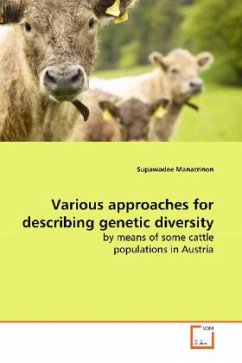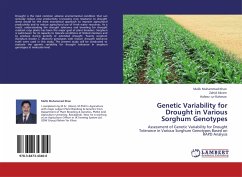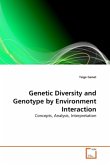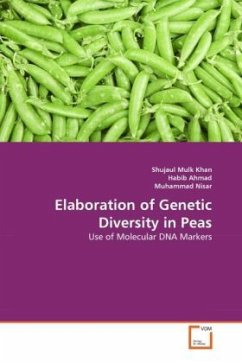Genetic diversity is necessary for the improvement
of economic traits and response to environmental
changes. Over the past 15 years, 300 out of the
6,000 breeds identified by FAO have become extinct
and there are currently more than a thousand breeds
faced with extinction. Loss of breeds may lead to a
reduction of genetic diversity, which limits the
ability of farmers to meet future agricultural
requirements. Furthermore, maintaining genetic
diversity within a breed is important in endangered
breeds as well as commercial breeds. This book
describes the various approaches to evaluate genetic
diversity between and within breeds of some Austrian
cattle populations. The approaches can be applied to
any species. The level of genetic diversity was
measured with different sources of information:
genetic polymorphisms, pedigree information and
measures derived from quantitative genetics.
Additionally, the lethal allele frequencies of four
genetic disorders in the Austrian Brown Swiss
population were estimated.
of economic traits and response to environmental
changes. Over the past 15 years, 300 out of the
6,000 breeds identified by FAO have become extinct
and there are currently more than a thousand breeds
faced with extinction. Loss of breeds may lead to a
reduction of genetic diversity, which limits the
ability of farmers to meet future agricultural
requirements. Furthermore, maintaining genetic
diversity within a breed is important in endangered
breeds as well as commercial breeds. This book
describes the various approaches to evaluate genetic
diversity between and within breeds of some Austrian
cattle populations. The approaches can be applied to
any species. The level of genetic diversity was
measured with different sources of information:
genetic polymorphisms, pedigree information and
measures derived from quantitative genetics.
Additionally, the lethal allele frequencies of four
genetic disorders in the Austrian Brown Swiss
population were estimated.








